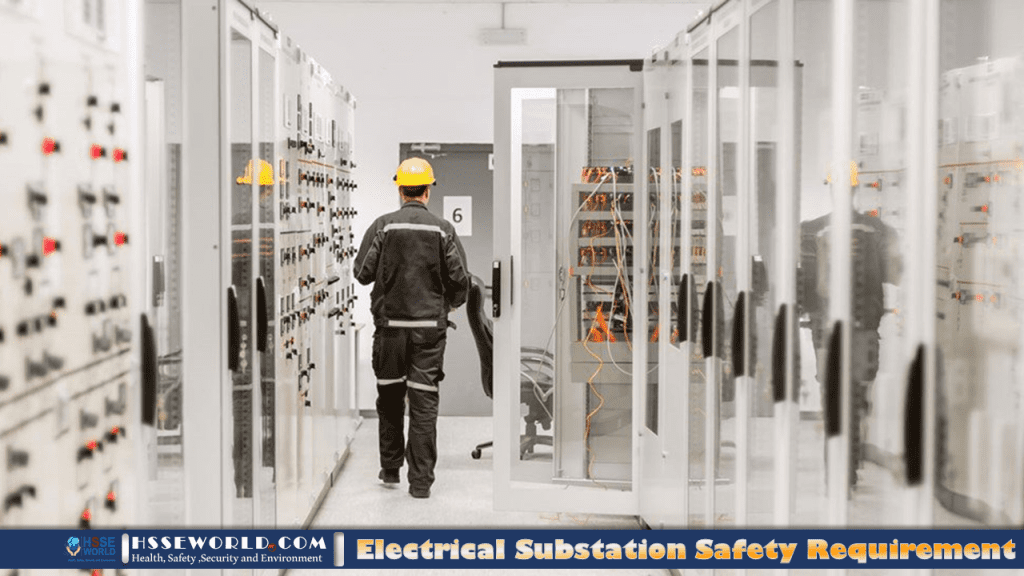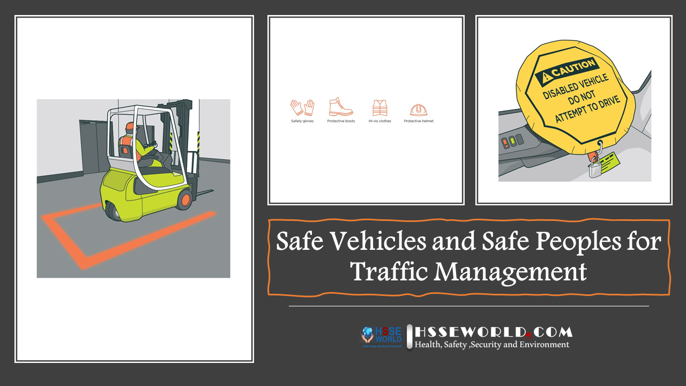Substations are potentially high-risk environments with a unique set of threats often hidden from the untrained eye. One step in the wrong direction can bring people too close to live equipment, and accidental stretch of an arm flipping a control switch can bring the entire facility to a grinding halt, or a dropped wrench can trigger an explosion. There are simply so many ways in which things can go wrong. These not only cause damage to assets and infrastructure but also compromise the safety and lives of the personnel, apart from interrupting power transmission or distribution. In This Article you will be familiar with the ways of Monitoring and controlling access right from the perimeter of the premises to the different structures and buildings as well as areas within them is imperative to ensure safe navigation in addition to the required PPE to Access Sbustation Safely.

Accessibility is a key aspect that heavily influences the security of the substation, its infrastructure, and the safety of its occupants. Network owners/ managers/ industrial units/ utilities are all free to manage accessibility concerns based on the site-specific risk analysis and potential safety threats. This inevitably tends to vary based on who is authorized to enter the substation, how, and under what circumstances. There is always the risk of unauthorized, deliberate, or accidental access, which must be mandatorily addressed.
CONTROLLING AUTHORISED ACCESS
There are basically a few typical circumstances that warrant authorized substation access:
Electrical Work
Installation, maintenance, operation of cranes/ vehicles fitted with booms/ baskets for working on electrical installations
Non-Electrical Manual Work
Installation, servicing of mechanical equipment/ communication lines, material movement, ground maintenance and cleanup, waste disposal
Inspections/ Delivery/ Audits/ Observations
- Routine inspections/ audits
- Verification of layout drawings/ building plans
- Material delivery
- Official facility tours
While OSHA’s 29 CFR 1910.269(u) stipulates that only qualified personnel can enter areas where live equipment/ parts are exposed or accessible, ground realities are indeed different, given the practical requirements. Site-specific access programs and safety procedures have made it possible for substations to comply with OSHA standards.
Particularly, classifying access based on the entrant and purpose of entry helps determine the safety measures that need to be in place during the visit. Access to high-risk/ restricted areas can typically be categorized as:
Unescorted
- All qualified employees are cleared for unescorted access
- Unqualified employees, however, need to be trained and acclimatised to the layout, location of the different live equipment/ parts, potential risks, dangers, restrictions and safety requirements of work in substations to move through the premises without an escort or guide to complete their tasks safely.
- The training qualifies them for unescorted access, and does not permit any activities that involve exposure to electrical hazards.
Accompanied by a Qualified Escort
- Unqualified workers need to be accompanied by a trained, qualified and well-insulated escort as they go about their tasks.
- Qualified escorts closely supervise and warn their wards from moving too close to energised equipment or other potential threats, and protect them from exposure to hazards should need arise.
Accompanied by a Privileged Escort
- Privileged escorts are trained and experienced personnel who are knowledgeable about substation layout, infrastructure, different equipment, their operating voltages and minimum approach distances, likely hazards, emergency procedures and other significant aspects of the work environment.
- Their presence is most likely required during rescue, maintenance, repairs, and emergency missions.
Regulating authorized access can prove helpful in enhancing the safety levels within the facility.
Vehicles entering the premises too will need to be monitored and guided by flagmen along roadways that have been reinforced to protect underground cables. Overhead clearance along the route and at the unloading point also needs careful attention.
RESTRICTING AUTHORISED ACCESS
Restricting access reduces the need for control as it limits the movement of people into and out of the substation, and hence the possibility of accidents triggered by human presence or negligence.
Allowing visitors into the substation or using the spare space within the premises to store equipment/ material simply results in an increase in the number of people who have access to restricted areas. More importantly, not all of them will be aware of potential electrical hazards that lurk in the environment.
While it is common sense for people to stay away from labeled enclosures and fencing around electrical installations, it may not be possible to steer clear of other imperceptible hazards.
Escorted access in such cases is the prevalent practice. Locking out high-risk areas is also recommended.
PREVENTING UNAUTHORISED ACCESS
Adequate illumination, surveillance systems, alarms, enclosures, and fences along the perimeter with warning signage are a few security measures that help deter unauthorized access, which is equally capable of compromising the safety of the facility and the people manning it. It is worth noting that unauthorized entrants with malicious intent or thieves are more likely to trigger accidents, as they tend to use poorly-lit routes and target remote parts of the premises in an attempt to stay hidden.
The purpose of access and qualification of the entrant are two key factors that need to be considered to ensure safe access to the substation. Implementing a suitable access program after analyzing site-specific risks can help address accessibility concerns.
Electric Substation Personal Protective Equipment (PPE)
Substation safety awareness has been gaining prominence, have a read of this in-depth look into several aspects of substation safety, primarily focusing on personal protective equipment (PPE) essentials, risks, danger-tackling tips, and training requirements.
Personal protective equipment is an integral part of substation safety requirements. It serves to provide adequate protection against hazards of different severity levels that personnel is likely to be exposed to during their routine jobs at the substation. It is the responsibility of the employer to accurately assess the various risks in the work environment, determine their severity and accordingly choose PPEs that offer the best protection. The choice of PPEs must be based on the findings of the most recent arc flash analysis and risk assessment exercise to provide effective cover.
PPES REQUIRED TO ENTER A SUBSTATION
Most utilities and industrial firms spell out PPE requirements, usage, and maintenance instructions as a part of their safety protocol. Employers must make sure the PPEs available on site include:
- Hard hats (with full/partial brims as necessary)
- Safety glasses with side shields
- Face masks/shields
- Suitable footwear (safety/steel-toed boots, rated dielectric footwear)
- Insulating gloves (rated, used along with leather/cloth linings for shock protection)
- Insulated tools
- Electrical/insulation blankets
- Live-line tools/hot sticks
Batteries and other chemicals that find used in substations pose a chemical hazard in the environment, which may require the use of respirators and other chemically resistant PPEs, clothing, gloves, and footwear to safeguard personnel.
Special safety equipment designed for use in confined/cramped spaces, barricades, scaffolding, gas/smoke detectors must also be available on demand.
(Eliminate Arc Flash Hazards 4 Solutions)
TACKLING VISIBLE AND HIDDEN DANGERS
Potential electrical hazards at a substation are not to be taken lightly. While all danger areas and high-voltage equipment/installations are usually enclosed, shielded from access or prominently labeled, there are several other imminent hazards throughout the place that need to be tackled on a daily basis.
Not all live transmission lines, equipment, or components within the substation are insulated as in conventional wiring. Accidental contact or even breaching the recommended minimum access distance can prove quite dangerous in certain areas. Even insulated components/parts are likely to be energized during an arc flash, posing a serious safety threat to those in contact with the component or in the path of the arc, and not adequately protected.
Residual energy in certain parts of de-energized equipment is another latent threat that catches people off guard. Actuators and springs in the breakers may not be fully discharged even after the power supply to the equipment has been shut off, making the use of recommended PPEs mandatory to avoid undue surprises.
It is important for personnel to keep in mind the PPEs do not totally mitigate the impact of hazards and are not replacements for safety protocols and procedures. De-energizing equipment (risky in a few cases), maintaining prescribed clearances, and remote operations wherever possible is bound to ensure safe working conditions. Donning an arc-flash-rated suit will at best reduce the impact of the incident and, hence, the overall severity of injuries – only if adequate precautions are taken and safety procedures followed.
TRAINING ON USE AND MAINTENANCE OF PPES
Apart from providing the right arc-rated PPEs for the job, employers must also ensure that all employees who have access to the substation, especially restricted, high-risk areas within are trained on:
- The safety and emergency procedures
- Likely hazards on specific tasks and how to use PPEs in a proper manner for personal safety
- Inspection of PPEs for any damages that may compromise the level of protection
- Maintenance and care of PPEs
PRO-ACTIVE PERSONAL PROTECTION
Substation workers must strictly adhere to safety regulations and use the right PPEs that offer the best protection against risks involved in a specific task. This is to safeguard themselves from imminent hazards to which they are likely to be exposed.
Complacency can prove fatal. Even the most experienced and qualified personnel on-site may not be able to anticipate an arc flash. It is never safe to enter the work area without adequate precautions. Customary inspections are mandatory to ensure de-energization and grounding. It is mandatory to maintain the recommended clearance from live units, wear the necessary protective garments and gear, and follow instructions meticulously when inside the substation. Workers must take time to carefully inspect the PPEs before use, report damages if any, and get the units replaced/ repaired/ tested for safety.
PPEs, along with comprehensive safety regulations, go a long way in protecting substation personnel in their daily work routine. Ensuring a safe work environment, in practice, is a mutual responsibility of both the employer and employee.




